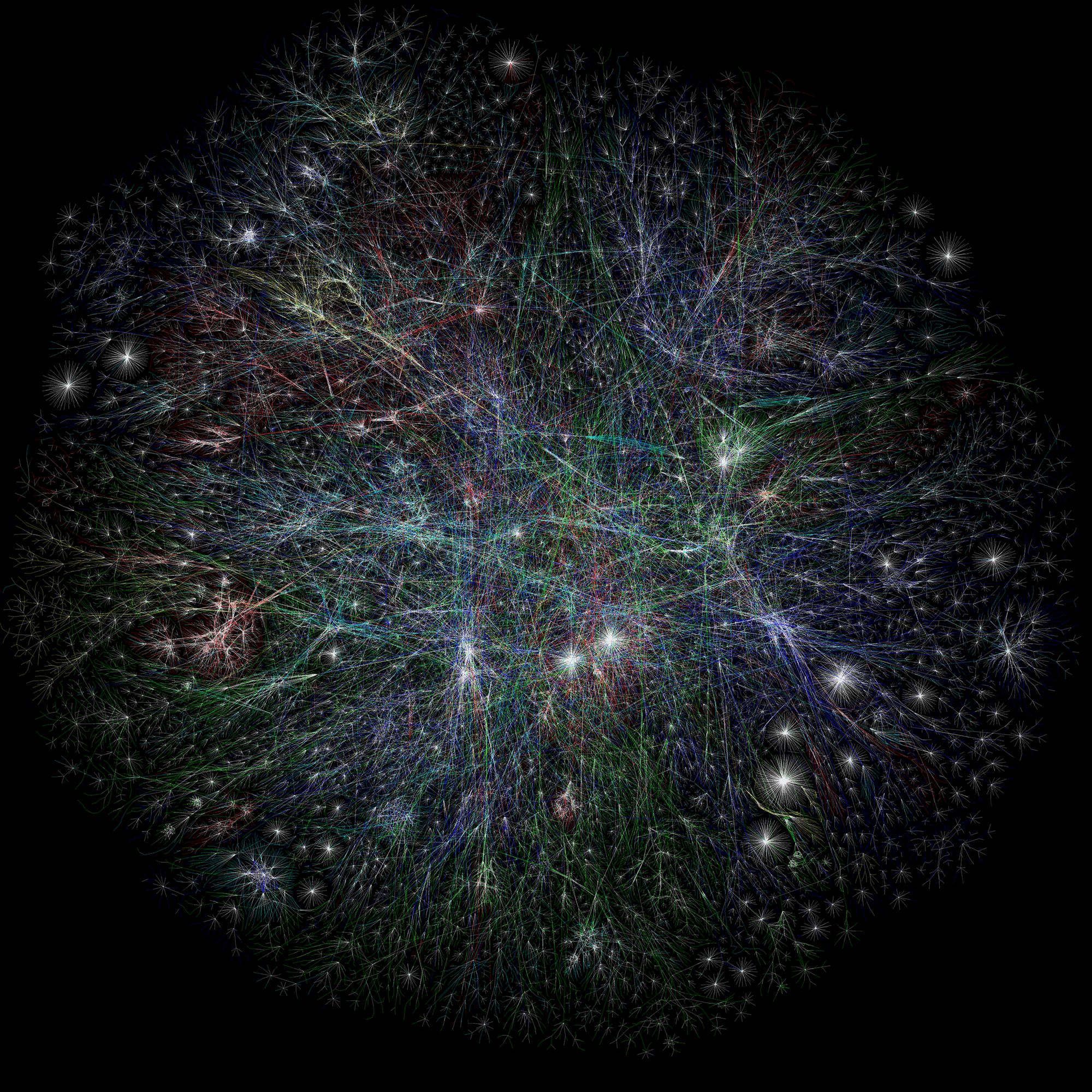
About
What is this about?
Some people need to see to understand.
Since the Internet is an enormous amalgamation of individual networks that provide the relatively seamless communication of data, it seemed logical to draw lines from one point to another.
This project has been a 17+ year labor of love under the moniker of The Opte Project. The map has been an icon of what the Internet looks like in hundreds of books, in movies, museums, office buildings, educational discussions, and countless publications. The map has also become a teaching tool, allowing visual learners to quickly understand the Internet and networking.
Now I hope this map will be a teaching tool on why we need to build a new Internet with new core principles built into it. The Internet is woven into society, and by changing the Internet, it's possible to change the world.
There are many other answers below and in our FAQ section of the site.
What am I looking at?
The Internet Is a network of networks: That said, in the video and images, you see how each network is connected to the next. Where things exist physically isn't necessarily the critical aspect, and it's the distance between the networks that matter. The more extensive the network and more connected, the closer to the center it will be. Fringe networks in the outer ring are often only connected via a couple of providers where the backbones are core to the whole thing.
Each RIR (region) has been given a color, and based on how big or small the network is also a shade within that color spectrum. Regional networks typically have the same network backbone infrastructure, so they often cluster together, making it easy to see how all of the parts are interconnected using this color system.
What do the colors mean?
The Internet's IP address space is allocated by what is called a "regional Internet registry" or (RIR). There are five RIRs that govern the Internet:
The African Network Information Center (AFRINIC) serves Africa.
The American Registry for Internet Numbers (ARIN) serves Antarctica, Canada, parts of the Caribbean, and the United States.
The Asia-Pacific Network Information Centre (APNIC) serves East Asia, Oceania, South Asia, and Southeast Asia.
The Latin America and Caribbean Network Information Centre (LACNIC) serves most of the Caribbean and all of Latin America.
The Réseaux IP Européens Network Coordination Centre (RIPE NCC) serves Europe, Central Asia, Russia, and West Asia.
(source: Wikipedia)
What is this in the video?
This orange shade was explicitly added to highlight sections of the United States Department of Defense (DoD). This whole network structure of the video and images is the US military.
Why do all of China's networks appear to branch from only two places?
There are only a couple points into China.
This is where the Internet goes from creating information freedom to the darker side. Because the way the Internet protocol was designed allowed for the ability to "hub and spoke" or control all of the data in and out of a specific point. In China's case, they control the entire network and everything that goes in and out of it. Thus, one could say the Internet has enabled more significant control of China's people and has further enabled communism.
If the Internet were designed to incorporate a mesh network on the edge leveraging ad-hoc network communications similar to Apple airdrop, the control of Information would be inherently more challenging to do. It could give power to people in ways never seen before in history.
The Iranian Internet Shutdown of Nov 2019
The 2019 Internet blackout in Iran was a week-long total shutdown of the Internet. It was ordered by Supreme National Security Council and imposed by the Ministry of ICT. ... During the blackout, Iranian citizens could only access the National Information Network.
Cause: 2019 Iranian protests
Target: Iranian Internet users
Date: 16 – 23 November 2019




